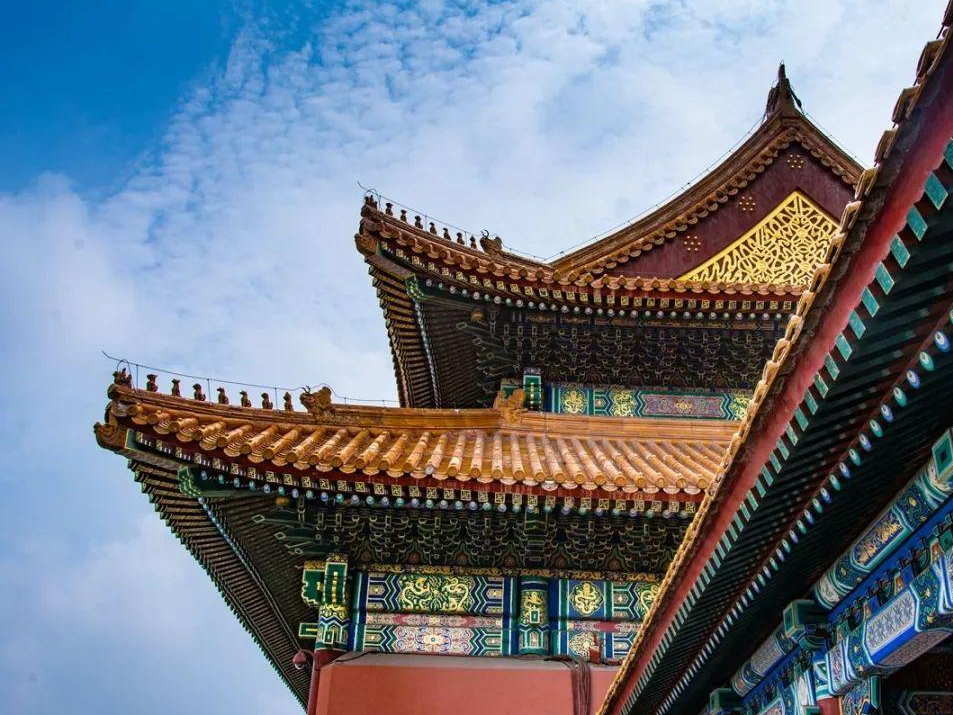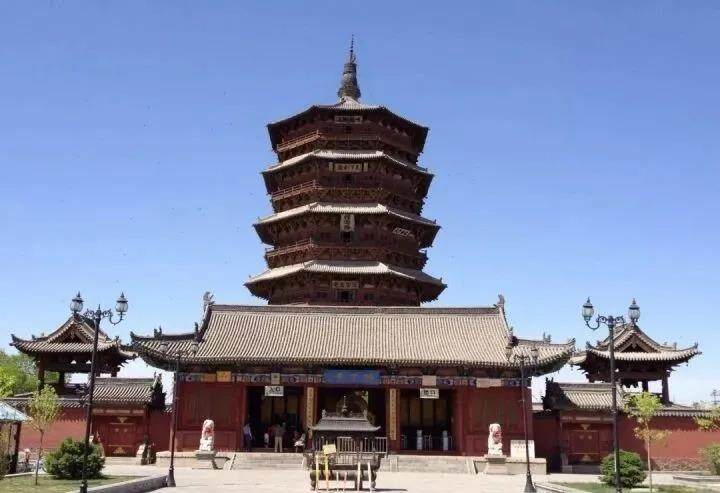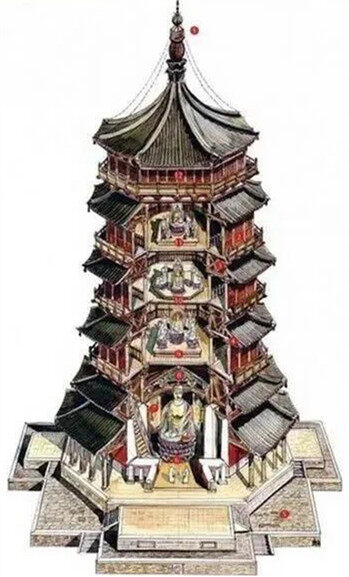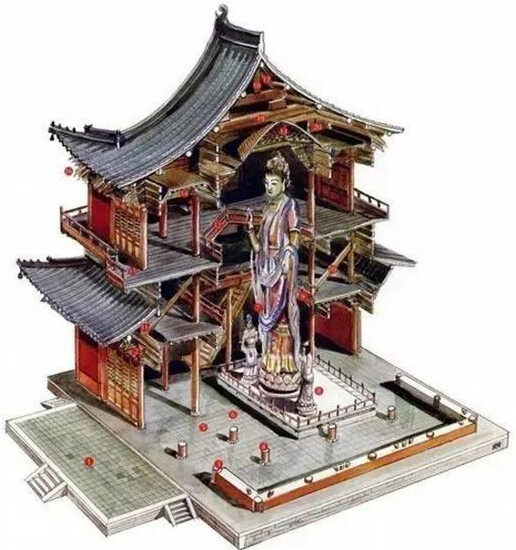- During the Tang, Song, and Liao dynasties, wood structure buildings were very popular

In the history of world architecture, ancient Chinese architecture, especially wood-structured buildings, occupies an important position with its unique materials, ingenious structure and unique style of plastic art, and is known as solidified poems and three-dimensional paintings. After thousands of years of wind and frost, they are still beautiful.

Sakyamuni Pagoda at Fogong Temple, Yingxian County

Yingxian Mutatu
Sakyamuni Pagoda at Fogong Temple, Ying County, Shanxi
The oldest and tallest existing wooden stupa building
The wooden pagoda of Yingxian County, that is, the Sakyamuni Pagoda of Fogong Temple, is located in Fogong Temple, Yingxian County, Shanxi Province. Built in the Liao Dynasty, the plan is octagonal, the appearance is 5 layers, and there are 4 layers of dark layers. It is actually 9 layers, and the height is 67.13 meters. There are statues on the bright floor of the tower, which is the oldest and tallest existing wooden tower in China.
The famous architect Liang Sicheng once commented on it as a unique and great work. Without seeing this tower, I don't know to what extent the possibility of wooden construction has reached.
It is a pity that due to its complex structure, after thousands of years, its upper layer has already experienced a serious tilt, even exceeding the slope of the Leaning Tower of Pisa. But it can't find a perfect repair plan, and can only maintain the status quo and reduce its damage. I don't know if it can survive the next millennium.

Nanchan Temple, Wutai County, Shanxi

Statues in the temple
Nanchan Temple, Wutai County, Shanxi
The oldest existing wooden structure
Nanchan Temple is located in Wutai County, Xinzhou City, Shanxi Province, more than 1,200 years ago. The main building in the temple is the Shanmen (Guanyin Hall). The East-West Halls (Bodhisattva Hall and Dragon King Hall) and the Great Hall are the earliest existing wooden structures in China. The main hall is the oldest surviving wooden structure of the Tang Dynasty in China. The Tang Dynasty sculptures in the temple are exquisite. It can be called a treasure of Tang Dynasty sculpture art and has important historical status and artistic value.

Tianjin Dule Temple

Dule Temple Guanyin Pavilion
Tianjin Dule Temple
The oldest wooden pavilion in existence
Dule Temple is a wooden structure building in the Liao Dynasty. It is located in Ji County, Tianjin City. The two oldest existing buildings in the temple are the Shanmen and Guanyin Pavilion. The facade of the mountain is three rooms wide, four rooms deep, two floors above and below, with a flat dark floor in the middle, with a height of 23 meters. It is the oldest high-rise wooden pavilion-style building in China. The Dule Temple was built in the style of the Tang Dynasty and under the Song style. It is an important material for studying the transformation of Chinese architecture.

Shanxi Datong Shanghuayan Temple

Huayan Temple
Shanxi Datong Shanghuayan Temple
The largest existing wooden structure of Liao and Song Dynasty
Huayan Temple is located in Datong City, Shanxi. It was built on the basis of the Huayan Sutra, one of the seven major sects of Buddhism, and was named Huayan Temple. The main buildings in the temple are the Daxiong Hall (Upper Temple) and the Bogarian Temple (Lower Temple). Its buildings, statues, murals, wall collections, and algae wells are all examples of my country's Liao Dynasty art. The main hall of the Shangsi is the Daxiong Hall. It was built in the third year of Jintianjuan (1140). It has a single eaves roof and nine rooms wide. It is the largest existing Buddhist temple in China during the Liao and Jin era.

the Forbidden city

Interior of the Hall of Supreme Harmony
the Forbidden city
The largest and most complete group of ancient wooden buildings in the world
The Forbidden City in Beijing was built in 1406 and completed in 14 years. It was the imperial palace of the Ming and Qing dynasties. 24 emperors successively assumed power here. The Forbidden City in Beijing covers an area of 720,000 square meters, with a construction area of about 150,000 square meters. The palace is divided into two parts, namely the front dynasty and the inner court. In the previous dynasty, the three halls of Taihe Hall, Zhonghe Hall and Baohe Hall were the center. The main buildings are Qianqing Palace, Jiaotai Palace, Kunning Palace and the twelve palaces on both sides. There are three gardens in the inner court, namely Ningshou Palace Garden, Ci Ning Palace Garden and Imperial Garden. Editor/He Yuting
Comment
 Praise
Praise
 Collect
Collect
 Comment
Comment
 Search
Search














Write something~